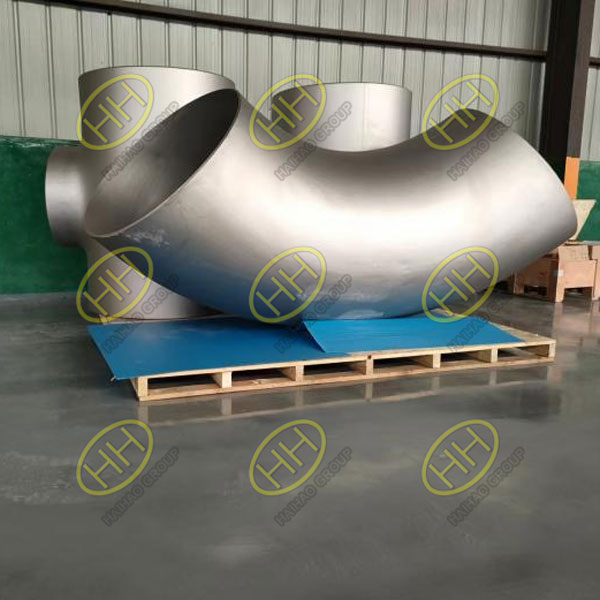Introduction to austenitic stainless steel’s ultra-low temperature resistance process
As an expert in the field of pipeline systems, Haihao Group has rich practical experience in the selection of product materials and product processing. Not long ago, we produced pipe fittings for Russian customers that can be used at minus 196 degrees Celsius. These products are made of austenitic stainless steel and undergo precise processing to ensure their stability and reliability in extreme environments.
Solid solution treatment is the basic heat treatment method of austenitic stainless steel and an important means to prevent intergranular corrosion. For austenitic stainless steel used in ultra-low temperature environments, the purpose of solution treatment is to fully dissolve the carbides and improve its anti-brittleness, so that it can be used safely at lower temperatures. Solution treatment can also be used in castings to improve the segregation produced during the solidification process and make the structure nearly uniform. In addition, after welding, the heat-affected zone of austenitic stainless steel will significantly reduce the low-temperature toughness of the material due to carbide precipitation and ferrite formation. Therefore, solution treatment should also be performed after welding to restore its low-temperature toughness.
Cryogenic treatment is an important process to prevent austenitic stainless steel from martensitic transformation in the ultra-low temperature range. At normal temperature, most Cr-Ni austenitic stainless steel is in a metastable state, but in the ultra-low temperature range, martensitic transformation occurs due to lattice distortion. In order to prevent the material from martensitic transformation during use, it needs to be cryogenically treated. Cryogenic treatment can make the material undergo martensitic transformation in advance to ensure structural stability during use. This process method can be determined according to the service temperature of the pipe fittings, and solutions such as liquid nitrogen or liquid helium are usually used as the cooling medium. After the parts immersed in the cryogenic medium reach the medium temperature, they can be kept cold. According to practical experience, keeping cold for 1 to 2 hours can achieve the purpose of processing. After cryogenic treatment, the martensite transformation of austenitic stainless steel is basically completed and can meet the usage requirements. For pipe fittings with strict sealing requirements or that are sealed by medium pressure, the number of cryogenic treatments can be increased to further ensure the stability of their performance.
Haihao Group uses its rich experience and professional technology to provide customers with high-quality pipeline products, and continues to innovate in material selection and process processing to meet the needs of different environments.

